Bark Mulch: One of The Best Mulches for Landscaping
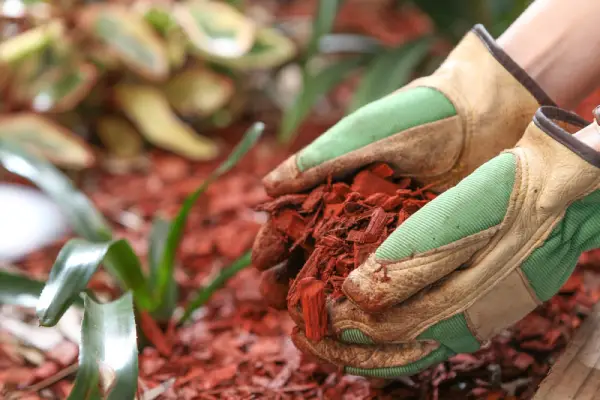
Mulch is a blanket term for any material spread over the surface of the soil to enhance the health and appearance of a landscape. Stone and synthetic mulch can be used for this purpose, but wood is preferred by many horticulturalists and home gardeners because it is versatile, affordable, and beneficial to the soil. Popular types of wood mulch include shredded wood mulch, untreated wood chips, and bark mulch. There are many benefits of bark mulch, so let’s explore what it is and how it could contribute to the beauty and well-being of your landscape.
Table of Contents:
- What Is Bark Mulch?
- Benefits of Using Bark Mulch
- Available Types of Bark Mulch
- What Type of Bark Mulch is Best?
- How to Apply Bark Mulch
- Maintenance Tips for Bark Mulch
What Is Bark Mulch?
Bark mulch consists of tree bark shredded into fine, medium, and large pieces. The bark used for mulch is often the waste material from sawmills and furniture makers. Most bark mulch sold in stores includes shredded redwood, Douglas fir, spruce, and pine bark. It can come in several forms, including chips, chunks, and shredded pieces. And since it’s organic, it breaks down over time, making it an excellent biodegradable mulch for garden beds, trees, shrubs, and other parts of your landscape where you won’t be digging.
Of course, there are some disadvantages of bark mulch. It may change the pH of your soil, which could potentially damage your plants. Also, these mulches break down at various rates depending on the weather in your area, so they may require more frequent reapplications (sometimes semiannually). Some bark mulches are dyed, and that could negatively impact plants. And if it is applied too thickly, the mulch could be detrimental to your plants and prevent beneficial insects from aerating the soil.
However, you can minimize the potential for damage by gathering information about the bark mulch you are purchasing and applying it in the most advantageous way. Even with its possible drawbacks, bark mulch is an excellent choice with many significant benefits.
Benefits of Using Bark Mulch
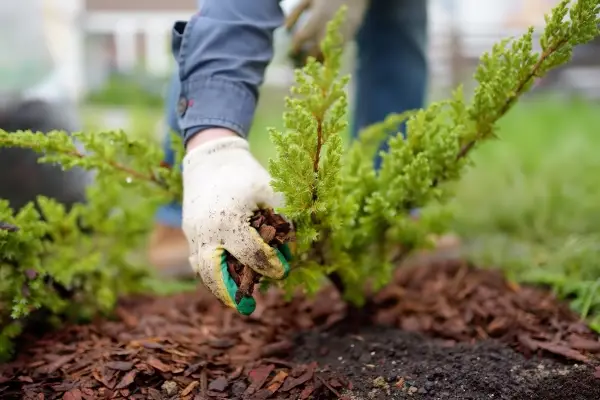
The primary purpose of mulch is to improve the health of the soil, and it does this in a number of ways. The benefits of bark mulch include the following:
- Adds organic matter that can help make your garden less susceptible to
- plant disease and insects.
- Retains moisture in the soil.
- Adds a protective layer for plants against weather.
- Suppresses weed growth.
- Keeps dust from blowing around your property.
- Keeps the soil cool and at a consistent temperature.
- Makes the garden bed look more attractive by adding texture and colour.
- Lasts a long time, even holding up well when exposed to the elements.
- Helps improve the soil’s fertility by adding nutrients as it decomposes.
- Creates a favourable environment for earthworms and soil
- microorganisms, which helps reduce soil compaction over time.
- Helps prevent soil erosion.
Available Types of Bark Mulch
There are several different types of bark mulch to use for your landscaping, including the following:
Pine Bark Mulch
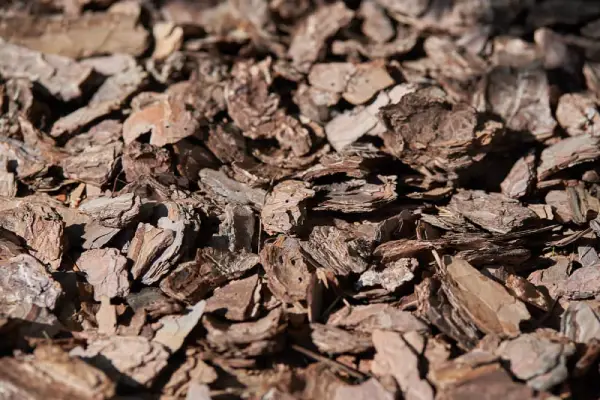
This is the most widely available bark mulch on the market. Pine mulch is lightweight and readily decomposes, making it ideal for building soil fertility. It also has a lighter colour (especially after sun bleaching) and may float or blow away in high winds and heavy rains.
Shredded Hardwood Bark Mulch
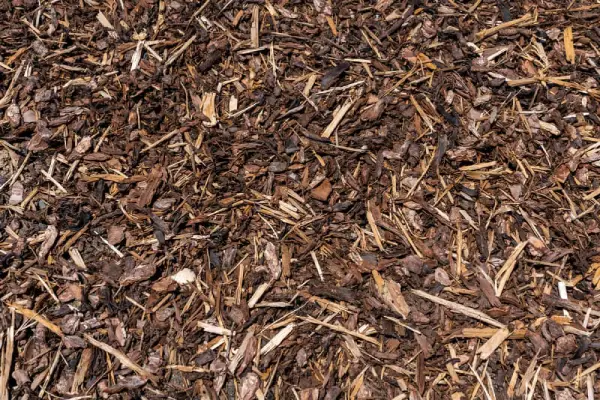
Heavier than pine bark, shredded hardwood mulch is excellent for water retention and holds its colour longer than pine bark.
Aged Bark Mulch
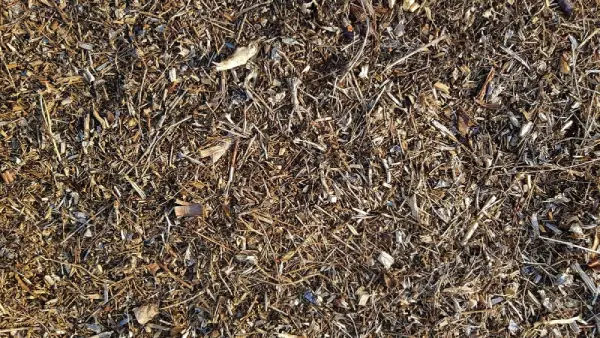
Aged bark mulch has already begun to decompose, making it ideal for vegetable gardens as the decomposing material adds more nutrients to the soil. It is heavier than pine bark and is a good choice for steep applications and wet areas.
Specialty Bark Mulch
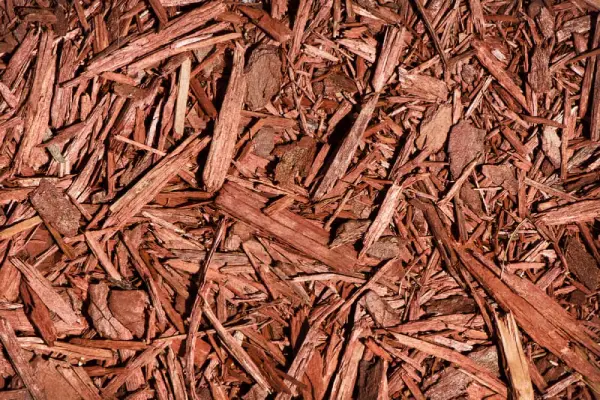
Some suppliers offer single-variety bark mulch like hemlock or cedar. Hemlock bark adds nutrients like vitamin C, while both cedar and hemlock are great for weed suppression.
Related Content: What Does Mulch Do?
What Type of Bark Mulch is Best?
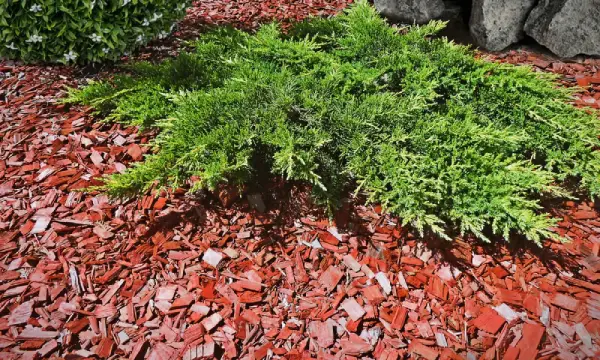
Using a high-quality bark mulch will not only enhance the look of your landscaping but will also be beneficial for plant growth and weed suppression. Depending on your preference for bark mulch colour, you should also consider the types of native trees in your region. If you live in a cedar-dense region, choosing cedar mulch is a good option because it mimics the natural decomposition process in your yard. Other mulches are better for regulating temperature and moisture, in addition to adding beneficial nutrients that will help your plants and shrubs thrive.
There are organic alternatives to bark mulch, such as newspaper, cardboard, compost, hay and straw, leaves, pine needles, or grass. However, many homeowners prefer to use bark mulch because it looks more attractive than the alternatives.
How to Apply Bark Mulch
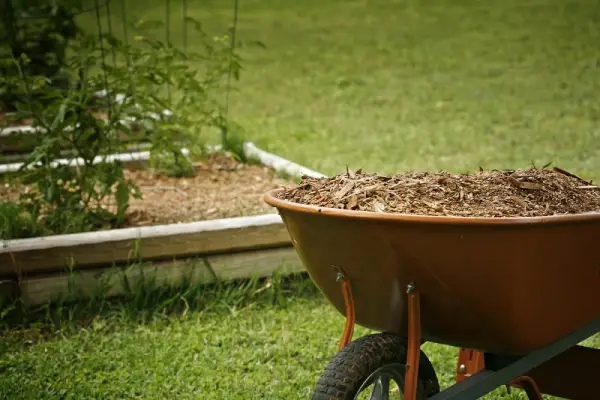
Learning how to apply bark mulch like a pro makes gardening much easier. A proper application will help ensure you reap the many benefits of bark mulch.
How you apply bark mulch is as important as the type of bark mulch you choose. Use 5 to 10 centimetres of shredded bark mulch at the base of trees and throughout flower or landscaped beds. Use 12 to 18 centimetres of bark mulch (preferably aged) to top-dress your vegetable garden (since this is the best choice for providing beneficial nutrients). Be careful to avoid mounding mulch up around the base of tree trunks.
Volcano-shaped mulching can be detrimental to your tree and can restrict water flow, limit aeration of the soil, and raise temperatures. And don’t forget about your potted plants! Annuals benefit from the additional moisture retention and insulation provided by mulch. A thin cover will benefit your annuals, especially those in very warm or windy locations like patios or driveways.
Maintenance Tips for Bark Mulch

Maintenance needs to be done year-round to enjoy all the benefits of bark mulch. The following simple maintenance tips can keep bark mulch doing what it does best — keeping your landscape healthy and attractive!
Use the proper tools, such as a pitchfork, to handle bark mulch. Having a wheelbarrow to haul the mulch will make the job much easier. Keep your mulch in place with a retention barrier. You can use plastic or metal edging along the border. You can also use bricks and stones to create an attractive wall that keeps mulch in place. Save money by buying bark mulch in bulk. Turn over the mulch periodically. Sun and heat can take their toll on mulch. Refresh bark mulch by turning it over from time to time. Add new bark mulch in early spring and fall. Applying it in the fall can help protect your landscape from harsh Canadian winter conditions. Properly shape bark mulch around your trees and shrubs. Apply mulch at the correct depth.
Create a Beautiful Landscape with Bark Mulch!
Now that you understand the benefits of bark mulch, it makes sense to use it to create a beautiful, healthy landscape. Many colours are available, so you can get creative with them to design a landscape you love!
The Grounds Guys® are your local experts when it comes to mulch and everything related to lawn care and landscaping. Contact us to explore your property’s landscaping potential. We are happy to further explain the purpose of mulch, answer questions about the benefits of bark mulch, and review other options available to you. Our experts will help you identify the type of mulch and services that will best meet your landscaping goals, and we’ll provide you with a free estimate.
We’re a proud member of the Neighbourly community of home service brands and stand behind the Neighbourly Done Right Promise™, which guarantees your satisfaction. So, find The Grounds Guys nearest you and transform your property today!
 Click to call
Click to call


